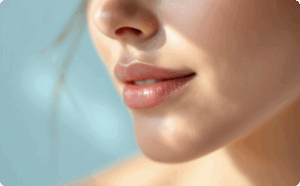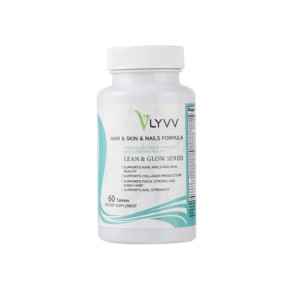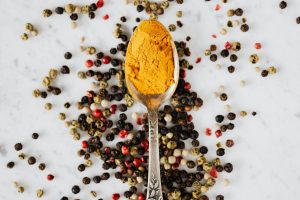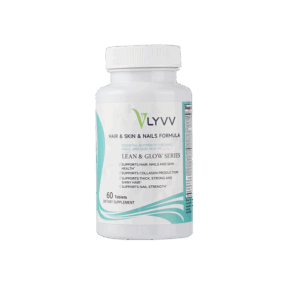The Science of Skin Aging !
 How Our Genes Hold the Secret to Youthful Skin
How Our Genes Hold the Secret to Youthful Skin
When we think about aging skin, we usually think about what we can see in the mirror: fine lines, wrinkles, sagging, and dark spots. Advertisements often blame the sun, pollution, or even stress — and they’re not wrong. But the real story goes much deeper, down to the very blueprint of who we are: our genes.
In recent years, scientists have uncovered how our DNA — the genes we inherit from our parents — shapes how our skin ages. While environmental factors like sun exposure and smoking speed up the process, our genetic code lays the foundation for how well (or how poorly) our skin stands the test of time.
Let’s dive into the fascinating world of skin aging and genes — and discover what it could mean for future skincare and anti-aging breakthroughs.
The Two Sides of Skin Aging: Intrinsic and Extrinsic
Skin aging is not a one-size-fits-all process. Experts divide it into two main categories:
Intrinsic aging: This is natural, inevitable aging determined mostly by our genes. It’s the slow breakdown of skin structure and function that happens over time, even in the absence of external damage.
Extrinsic aging: This is caused by environmental influences like ultraviolet (UV) radiation from the sun, pollution, smoking, poor nutrition, and stress.
Imagine two people living very different lifestyles: one who always wears sunscreen and eats healthily, and another who sunbathes daily and smokes. Even if their genes are identical (say, they’re twins), the second person will likely show signs of aging much faster. However, their genetic “starting point” still matters enormously.
How Genes Shape Our Skin’s Fate
Our genes act like a master instruction manual for our skin. They determine:
How much collagen and elastin we produce
How efficiently our skin repairs itself after damage
How strong our antioxidant defenses are
How much inflammation our bodies create in response to stress
As we age, the activity of many key genes changes — some turn “down,” and some turn “up” — leading to slower cell turnover, thinner skin, less hydration, and more visible damage.
 Let’s look at a few key players in this genetic orchestra:
Let’s look at a few key players in this genetic orchestra:
- COL1A1 and COL1A2: The Collagen Builders
Collagen is the most abundant protein in our skin, giving it strength and structure. Think of it as the “scaffolding” that holds everything together. Two genes, COL1A1 and COL1A2, produce the main types of collagen in the skin.
In youth, collagen production is high. The skin stays firm and resilient. But as we age, these genes gradually produce less collagen, and what’s made can be of lower quality. Starting in our mid-20s, collagen production drops by about 1% every year.
This slow decline explains why wrinkles deepen and why skin becomes less plump over time.
- MMPs (Matrix Metalloproteinases): The Collagen Breakers
If COL1A1 and COL1A2 are the builders, MMPs are the wrecking crew. These enzymes, especially MMP1, break down old collagen to make way for new tissue.
In young, healthy skin, this process is balanced — old collagen is broken down, and new collagen takes its place. But with aging (especially with sun exposure), MMPs become overactive, breaking down collagen faster than it can be rebuilt.
This leads to sagging, wrinkling, and the dreaded “crepey” texture we associate with older skin.
- SOD2: The Antioxidant Guardian
Every day, our skin is bombarded by molecules called free radicals — unstable atoms produced by UV light, pollution, and even normal metabolism. Free radicals damage our cells and accelerate aging.
SOD2 (Superoxide Dismutase 2) is a gene that produces an important antioxidant enzyme. This enzyme neutralizes free radicals before they can cause harm.
Unfortunately, with age, the effectiveness of our antioxidant systems weakens. If SOD2 isn’t doing its job well — whether due to genetics or aging — our skin experiences more oxidative stress, leading to wrinkles, age spots, and inflammation.
- TP53: The DNA Protector
Known as the “guardian of the genome,” TP53 is a gene that helps detect DNA damage and either repairs it or triggers cell death if the damage is too severe.
In youthful skin, TP53 acts like a vigilant security guard, maintaining healthy cell function. But with age, its activity declines. Damaged cells start to accumulate, leading to thinning skin, uneven pigmentation, and even a higher risk of skin cancers.
Genetic Pathways: The Symphonies Behind Skin Aging
Scientists have discovered that it’s not just individual genes acting alone. Instead, groups of genes work together in pathways that control:
Inflammation: Aging skin shows a chronic, low-grade inflammation called “inflammaging.” Genes that regulate inflammatory responses become more active, damaging skin over time.
DNA repair: Genes involved in fixing damaged DNA slow down, leading to more mutations.
Cell turnover: As we age, the genes controlling how quickly skin cells divide and replace themselves start to “slack off,” leading to slower healing and duller skin.
The interplay among these genetic pathways explains why aging affects not just the appearance but also the function of the skin.
How Much of Skin Aging Is Genetic?
Studies suggest that about 60% of skin aging is due to intrinsic (genetic) factors, while 40% is driven by external factors we can control.
In other words, your genes load the gun — but your lifestyle pulls the trigger.
This explains why two people with similar genetic backgrounds can look dramatically different depending on how well they protect and care for their skin.
Can We Influence Our Genes?
Here’s the exciting part: while we can’t change our DNA, we can influence how our genes behave — a field called epigenetics.
Epigenetics involves changes that affect gene activity without altering the DNA sequence itself. Factors like diet, skincare habits, sleep, and stress management can “turn on” or “turn off” certain genes, including those involved in skin aging.
For example:
√ Using sunscreen daily can reduce the activation of MMPs, preserving collagen.
√ Eating antioxidant-rich foods (like berries, green tea, and nuts) can boost the performance of genes like SOD2.
√ Retinoids (Vitamin A derivatives used in skincare) have been shown to upregulate collagen-producing genes and downregulate MMPs.
Thus, modern skincare and wellness strategies are increasingly focused on protecting and supporting our genetic “software” for healthier, younger-looking skin.
What the Future Holds: Gene-Based Skincare?
Scientists are now exploring therapies that directly target genetic pathways:
√ Gene therapy: Experimental treatments aim to “fix” damaged genes in skin cells.
√ Epigenetic skincare: Some advanced products claim to work at the epigenetic level to boost youth-related gene activity.
√ Personalized skincare: DNA testing might soon guide custom-tailored skincare routines based on your unique genetic makeup.
Although much of this is still in its early stages, the future looks promising — and personal. One day, your skincare products might be formulated based on your genes!
Final Thoughts: Embrace Your Unique Aging Journey
Understanding the role of genes in skin aging can feel a bit overwhelming. But it’s also empowering.
Yes, our genes set the stage for how we age. But the choices we make — from wearing sunscreen and moisturizing daily to eating well and managing stress — have a huge impact on how our skin looks and feels over time.
Aging is a natural, beautiful process that reflects a life well lived. By combining the wisdom of science with smart skincare and healthy habits, we can celebrate our skin at every age — with resilience, radiance, and confidence.
Because in the end, aging gracefully isn’t about chasing perfection. It’s about working with — not against — the incredible biology written into our very DNA.
References
Fisher, G. J., Varani, J., & Voorhees, J. J. (2008). Looking older: Fibroblast collapse and therapeutic implications. Archives of Dermatology, 144(5), 666–672.
Krutmann, J., et al. (2017). The skin aging exposome. Journal of Dermatological Science, 85(3), 152–161.
Quan, T., et al. (2009). Matrix-degrading metalloproteinases in photoaging. Journal of Investigative Dermatology Symposium Proceedings, 14(1), 20–24.
Birch-Machin, M. A., & Bowman, A. (2016). Oxidative stress and ageing. British Journal of Dermatology, 175(Suppl 2), 26–29.
Rittié, L., & Fisher, G. J. (2002). UV-light-induced signal cascades and skin aging. Ageing Research Reviews, 1(4), 705–720.
Schroeder, P., et al. (2008). Photoaging mechanisms: An overview on cellular and molecular aspects. Photochemical & Photobiological Sciences, 7(6), 707–714.
Blume-Peytavi, U., et al. (2016). Skin aging and gender differences. Dermato-Endocrinology, 4(3), 308–312.
Gonzalez-Molina, J., et al. (2020). Extracellular matrix in aging and disease: Biological functions and therapeutic perspectives. Biomedicines, 8(9), 266.
Disclaimer: This information is for educational purposes only and is not a substitute for professional medical advice or diagnosis.
Premium Ingredients and Best-Optimized Blends

• Increase Metabolism
• Burn Fat Faster
• Reduces Appetite
• Decrease Blood Sugar
• Increase Adiponectin Levels

• Contain Phytoestrogens
• Increase Blood Flow
• Improve Sexual Function
• Reduce Fatigue and Arthritic Pain

• Contain Hydroxycitric Acid
• Control Appetite
• Reduce Abdominal Fat Accumulation
• Booster Metabolism

• Contain Chlorogenic Acid and Caffeine
• Boost Fat Metabolism
• Control Appetite
• Lower Cholesterol and Triglycerides Levels

 Hair & Skin & Nails Formula
Hair & Skin & Nails Formula